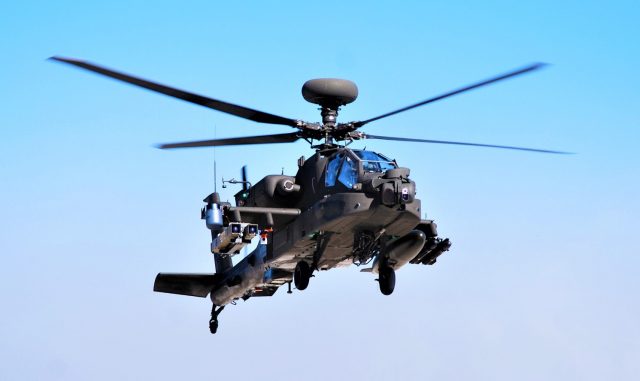The South Korean defense procurement agency (DAPA) has announced its intention to buy another 36 attack helicopters, more JDAM GPS-guided bombs and AGM-114R Hellfire II missiles.
According to local news reports, DAPA said it was looking to buy “Apache-class” attack helicopters to boost the Republic of Korea Army fleet of 36 Boeing AH-64E Apaches that have been purchased in 2016.
While the agency did not explicitly say, it would be reasonable to expect the next 36 helicopters, which are scheduled for acquisition between 2022 and 2028, to be Boeing-built Apaches due to training and maintenance benefits offered by commonality.
The program is worth close to $3 billion and will allow for the retirement of Bell AH-1S Cobra helicopters.
Additionally, the country plans to locally develop a minesweeping helicopter. The aircraft is expected to be based on the maritime variant of the KUH-1 utility helicopter and to operate from ROK Navy Dokdo-class helicopter carriers.
Other items topping the list include a $400 million batch of JDAM GPS-guided bombs, while the US State Department also approved a potential sale of 288 AGM-114R Hellfire II missiles to South Korea earlier this year.
DAPA detailed its purchase list as problems with the Terminal High Altitude Area Defense (THAAD) anti-ballistic missile defense system operated jointly by the US and South Korea are returning to the limelight.
Since the THAAD battery arrived in country, soldiers operating the system at the site in Seongju County, North Gyeongsang Province, have been living in subpar conditions and South Korea is yet to approve a permanent site for the systems. The delays are a result of China’s economic pressures and protests from locals concerned with the potential health risks. China fears THAAD’s powerful radar could be used to spy on Chinese mainland.
At times, the US even had to resort to helicopter deliveries for Korean and American soldiers at the site as local villagers were blocking the only road leading up to the battery.
Local reports now say that US defense secretary Lloyd Austin addressed the issue during his recent visit to the country.
Local diplomats refused to provide details, saying only consultations with the US and the villagers were ongoing.



























